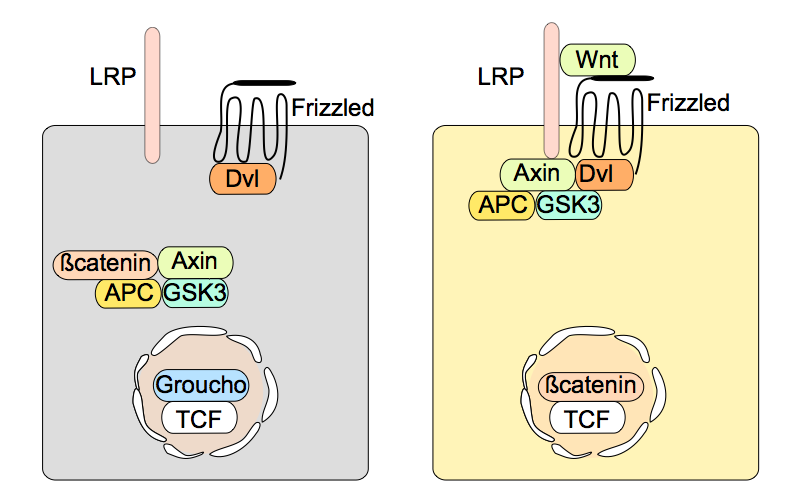Wnt signaling
The Wnt signaling pathway
(Left) In the absence of Wnt, a destruction complex consisting of Axin, APC, and GSK3 resides in the cytoplasm, where it binds to and phosphorylates ß-catenin, which is then degraded. Dvl (Disheveled) is required for activating the pathway as well. In the nucleus,T cell factor (TCF) is in an inactive state as the consequence of binding to the repressor Groucho.
(Right) Binding of Wnt to its receptors induces the association of Axin with phosphorylated lipoprotein receptor-related protein (LRP). The destruction complex falls apart, and ß-catenin is stabilized, subsequently binding TCF in the nucleus to up-regulate target genes.
See Clevers, H. & Nusse, R. (2012) for an extensive review. A more elaborate diagram of Wnt signaling is shown here.

more details are shown in separate pages for:



